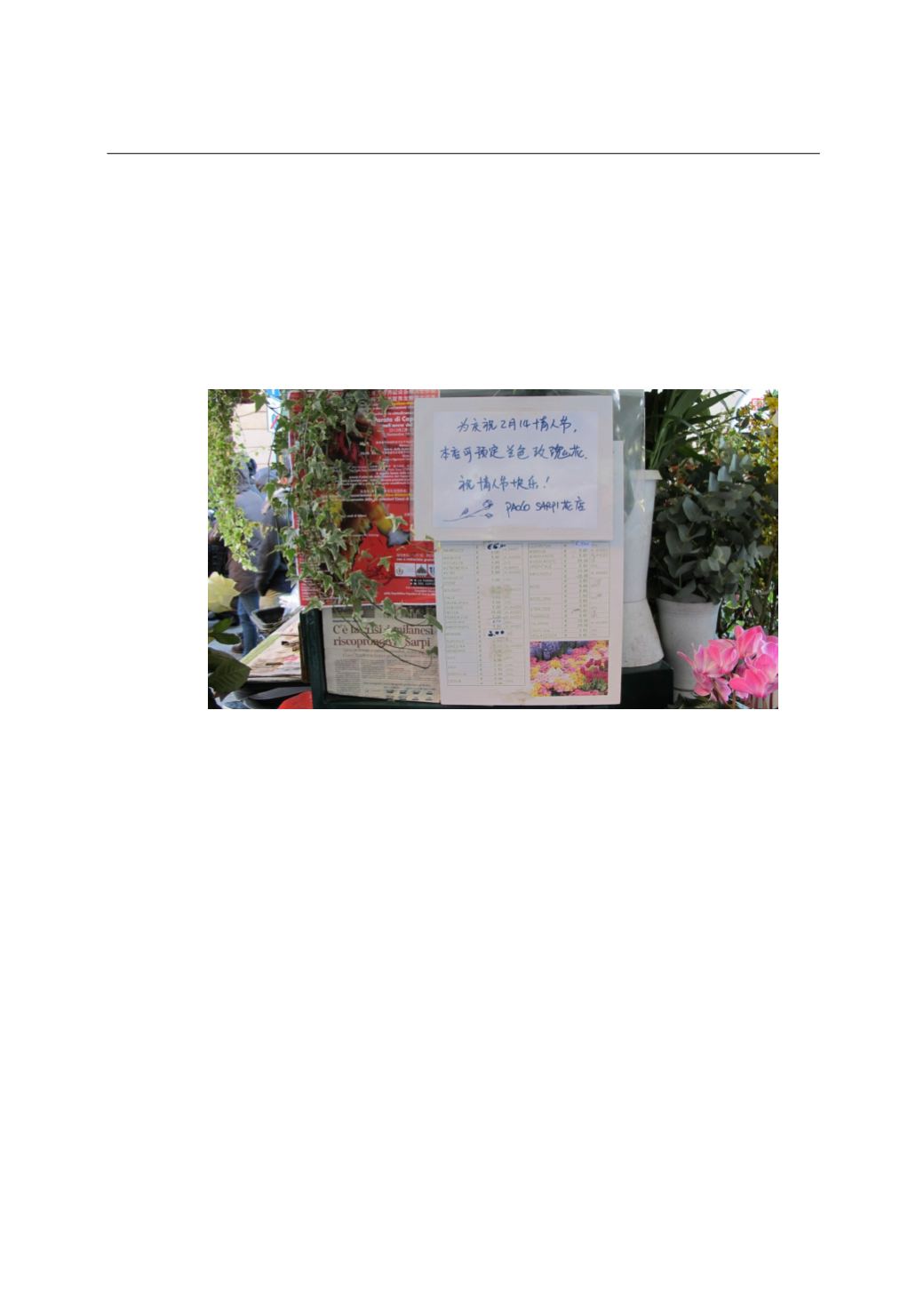
Urbanities,
Vol. 3 • No 1 • May 2013
© 2013
Urbanities
101
analysis of visual data. In this sense, my visual research concerns the visibility and reflection of
the social relations and the everyday negotiation of prejudices and stereotypes in a contested
urban space. We can study the Milan’s Chinatown and its changes under the lens of
gentrification, globalization and migration policies in Italy (Manzo 2012a, 2012b). As shown in
the photograph below, during the Chinese parade in Milan I noticed a kind of blackboard full of
different signs, articles and notes on a local Italian street florist.
Figure 1: A local Italian street florist in Paolo Sarpi street, Milan (Italy), February 10
th
2012.
©
Lidia K. C. Manzo
My attention was particularly attracted by a hand-written sign in Chinese. The florist explained
to me that it was a notice for his Chinese customers. Since Valentine's Day was close, he thought
to suggest to book flowers in advance. He said, ‘They love blue roses, Chinese people are crazy
for blue roses nowadays and they are very good customers, they always buy a minimum of
eleven roses, not as the Italians (laugh)’. Signs like this seem to me to constitute a fascinating
‘mix’ of commercial advice and suggestions for any kind of customer, Italian as well as Chinese.
Interestingly Italian anti-immigrant rhetoric sometimes doesn’t match everyday negotiations of
consumption practices and commercial interests.
As Mac Dougall (2006) points out, we should develop forms of ethnographic knowledge
and explore areas of social experience for which the visual media have a demonstrated affinity;
in particular the spatial, the temporal, the corporeal and the emotional. In this perspective, what
role does the visual play in understanding how power structures operate at the micro level of


